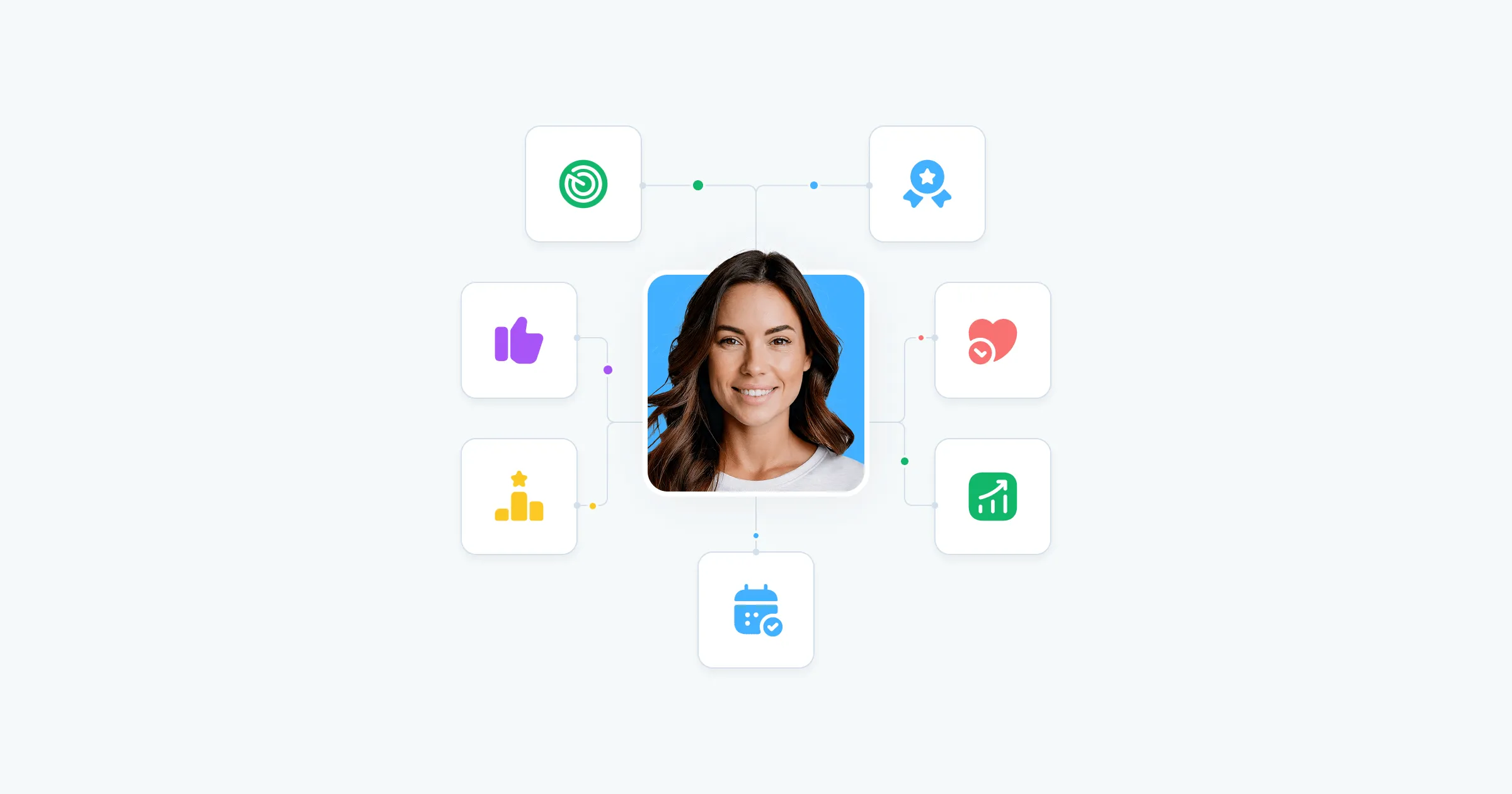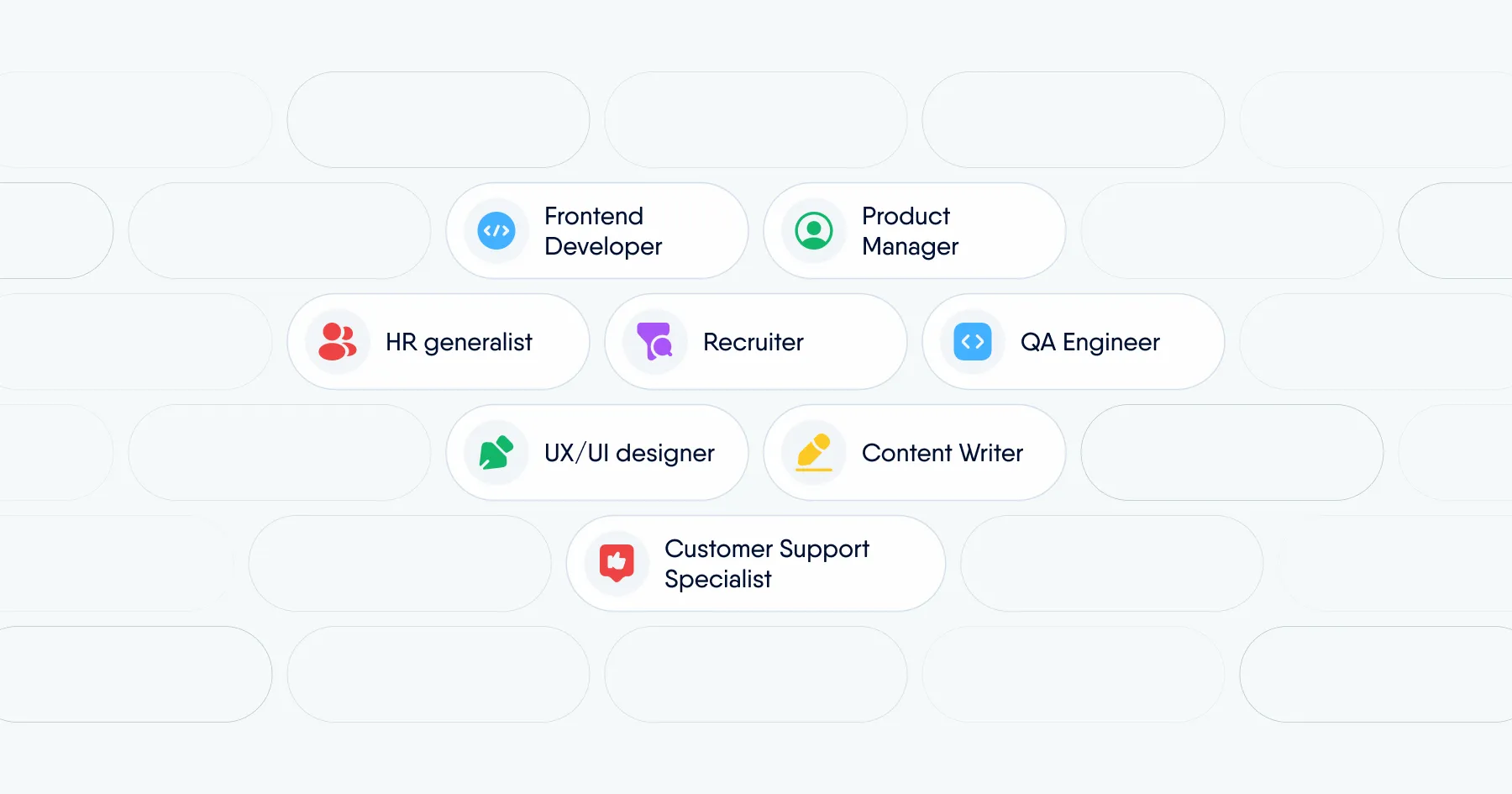Pre-Recorded Video Interview
What is a pre-recorded video interview?
What is a pre-recorded video interview?
A pre-recorded video interview, also known as an asynchronous video interview or asynchronous interview, is a recruitment method in which a candidate records their responses to interview questions using a webcam or mobile device and then submits the video to the hiring team. The entire process takes place without the recruiter being present in real time.
How is a pre-recorded video interview different from a live video interview?
Video meetings have become a standard part of the recruitment process. Depending on the stage of the process and the number of candidates, recruiters may choose to conduct a live interview or ask candidates to record their responses. The comparison below outlines the key differences between these two formats.
Criteria | Pre-Recorded Video Interview | Live Video Interview |
|---|---|---|
Format | Asynchronous, no recruiter participation | Synchronous, real-time conversation |
Interaction | No interaction with a recruiter; the candidate answers questions independently | Two-way communication with real-time exchange between both parties |
Time flexibility | Candidates can record responses at any time | Recruiter and candidate must coordinate a meeting time |
Duration | Typically shorter (a few minutes of responses) | Typically longer (30–60 minutes) |
Candidate’s ability to ask questions | Limited – depends on platform or app features | Candidates can ask the recruiter questions in real-time |
Spontaneity and reaction assessment | Limited, as the candidate can “script” their answers | Allows assessment of natural responses and spontaneity |
Self-presentation | Strong focus on clarity of answers | Includes conversational and interpersonal skills |
Replayability | Recruiters can replay the recording multiple times | No replay unless the session is recorded with the candidate’s consent |
Organizational convenience | Doesn’t require scheduling coordination | Requires coordinating availability between both parties |
Technology used | Recording platforms (e.g., HireVue, VidCruiter) | Video conferencing tools (e.g., Zoom, Teams, Google Meet) |
Live interviews are preferred when:
- the role requires strong interpersonal skills,
- organizational culture and team fit are important,
- a deeper assessment of the candidate is needed before making a final decision,
- the candidate has specific questions about the company or the role.
Many companies – including Deloitte – combine both approaches: pre-recorded video interviews help narrow down the candidate pool, while live interviews are reserved for the top matches.
How does the pre-recorded video interview process work?
Recruitment using pre-recorded video interviews follows several stages that allow recruiters to efficiently screen candidates while offering flexibility for both sides.
- The recruiter publishes the job posting in the applicant tracking system (ATS), where candidates submit their applications. After the initial screening, selected applicants are invited to the next stage.
- The recruiter prepares a set of questions tailored to the role and the company. These may include general, behavioral, technical, problem-solving, or creativity-focused questions, such as:
- Describe the last project you led.
- Explain the concept of [X] in a way that a non-technical colleague would understand.
- Tell us about a time you had to convince your team to support your idea.
- The candidate then receives an email containing:
- a link to a video interview platform (e.g., One-Way Interview, Willo, VidCruiter, HireVue);
- technical instructions for recording the interview;
- details about the number of questions, time limits for responses, and the submission deadline (usually 3–7 days).
The candidate then logs into the platform and records their responses at a convenient time. In most cases, a smartphone, tablet, or computer with a camera and microphone is enough to complete the interview. Most platforms allow recruiters to set a time limit per question and control the number of allowed recording attempts.
- The video responses are saved and shared with the hiring team, who can review, compare, and evaluate them based on predefined criteria. Increasingly, AI-assisted analysis is being used to assess elements such as tone of voice, facial expressions, key phrases, and even auto-generated transcripts.
- After reviewing the videos, the recruiter decides whether to invite the candidate to a live (in-person or virtual) interview, move them forward in the hiring process, or end the process for that particular candidate.
Benefits of using pre-recorded video interviews
From the perspective of HR teams and hiring managers, pre-recorded video interviews offer a range of practical advantages:
- Save recruiters’ time by eliminating the need to participate in every early-stage interview – a major benefit for teams managing multiple hiring processes at once.
- Improve team collaboration, since recordings can be easily shared with decision-makers regardless of their schedules or location.
- Enhance recruitment scalability and reach, especially for high-volume hiring, multiple simultaneous openings, or international organizations.
- Enable better assessment of soft skills early in the process, including communication style, clarity of thought, and coherence of answers.
- Ensure equal conditions for all candidates, which makes it easier to compare responses and helps promote diversity while reducing unconscious bias.
- Allow repeated viewing of responses, improving the accuracy of evaluations and enabling more objective decisions, especially when multiple reviewers are involved.
- Reduce operational costs by eliminating the need for live interviews with every candidate, easing the workload of HR teams.
- Make it easier to involve external or remote experts without requiring their physical presence.
When to use pre-recorded video interviews
Pre-recorded video interviews are especially effective in situations where traditional recruitment methods are insufficient or too time-consuming:
- When handling a high volume of applications, and it’s not feasible to speak with every candidate – making fast pre-screening a priority.
- When scheduling is difficult, and both sides need more flexibility – this format allows everyone to move at their own pace.
- In remote or international recruitment, where time zone differences can be a barrier and quick decisions are essential for the business.
- When equal evaluation conditions are important, since all candidates answer the same questions under the same circumstances.
- When you want to assess communication style, clarity, and presentation skills before inviting someone to the next stage.
- If replayability matters, allowing the team to review answers, analyze responses, and discuss feedback collaboratively.
- When you value the quality and focus of answers, as candidates have time to prepare, check their setup, and present themselves without the distractions common in live video calls.
Are pre-recorded video interviews a good fit for every organization?
Pre-recorded video interviews aren't a required part of every hiring strategy, but they can be a valuable tool when aligned with the needs of a specific team, work culture, and type of role. Many companies choose this format not just for efficiency, but because it helps structure the recruitment process and improves the candidate experience.
This approach tends to work best for:
- outsourcing companies hiring for multiple similar roles at once (e.g., customer service, accounting, or IT);
- retail chains and e-commerce companies, especially during seasonal recruitment periods;
- logistics and warehouse companies, where availability, motivation, and basic competencies need to be assessed quickly;
- tech and IT firms, which often conduct remote, international hiring processes;
- banks and financial institutions looking to evaluate candidates’ communication style early in the process.
In less formal environments – such as creative agencies, product teams, nonprofits, or startups – live interviews may be a better choice from the start. Direct interaction with a recruiter helps build a connection, and candidates often expect a more “human” approach.
To sum up, while pre-recorded video interviews aren’t a one-size-fits-all solution, they can be a highly effective selection tool – provided the process is thoughtfully designed and adapted to the organization’s needs.

